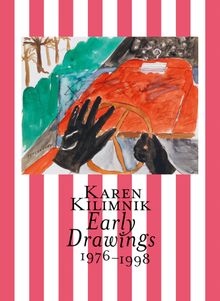ARTIST MONOGRAPHS
|
|
in stock $70.00 Free Shipping UPS GROUND IN THE CONTINENTAL U.S. |
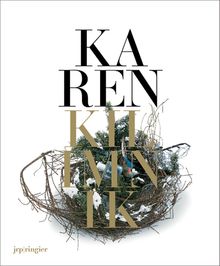 Karen Kilimnik
Karen Kilimnik
Published by JRP|Ringier.
Edited by Lionel Bovier. Text by Caoimhín Mac Giolla Léith, Dominic Molon.
PUBLISHER
JRP|Ringier
BOOK FORMAT
Paperback, 9.25 x 11.25 in. / 192 pgs / 143 color.
PUBLISHING STATUS
Pub Date 2/24/2015
Out of print
DISTRIBUTION
D.A.P. Exclusive
Catalog: SPRING 2015 p. 132
PRODUCT DETAILS
ISBN 9783037643853 TRADE
List Price: $55.00 CAD $72.50 GBP £30.00
AVAILABILITY
Not available
STATUS: Out of print | 00/00/00 For assistance locating a copy, please see our list of recommended out of print specialists |
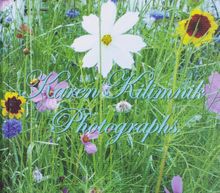 Karen Kilimnik: Photographs
Karen Kilimnik: Photographs
Published by Edition Patrick Frey.
Karen Kilimnik takes pictures with the same gesture she paints with: an unerring sense of the glut of shiny surface beauty, under which lurk the shades of monstrous things unseen and unspoken. She takes pictures with a shrewd, informed eye. She adores kitsch, but she knows how phony it is and how much this phoniness makes it irresistible. She is a wise old soul but she's absolutely determined to preserve the innocence and vulnerability of a young and restless mind. Kilimnik takes pictures of what she unconditionally loves, and this love is eclectic and deeply darkly romantic. She photographs idylls ad nauseam: the rolling hills of the Cotswolds in south central England, so leafy they almost seem unreal; a ladies' bicycle, hedge-lined streets, sheep in the shadow of a tree, cows in the morning mist, a squirrel that seems to be nibbling on a flower, sitting ducks on the banks of a stream. Kilimnik views profane reality through the mercilessly wide-open eyes of her camera lens, transforming it in her photographs into a stage for her fabulously dreamy / nightmarish fairytale figurations and arrangements. When reality does not suffice, she embellishes it, trimming the trees in the garden, for example, with glass Christmas ornaments or with fairy lights. Running through Kilimnik's photographic work are several motifs we know from her painting. And the two come together in her obsession with photographing details from her own paintings over and over again, such as the magnificent palace walls she has painted, as though beseeching us to agree that her painted fictions are no less real than so-called reality.
PUBLISHER
Edition Patrick Frey
BOOK FORMAT
Hardcover, 9.25 x 8.5 in. / 252 pgs / 251 color.
PUBLISHING STATUS
Pub Date 9/23/2014
Active
DISTRIBUTION
D.A.P. Exclusive
Catalog: Publisher Backlist
PRODUCT DETAILS
ISBN 9783905929584 TRADE
List Price: $60.00 CAD $85.00
AVAILABILITY
In stock
in stock $60.00 Free Shipping UPS GROUND IN THE CONTINENTAL U.S. |
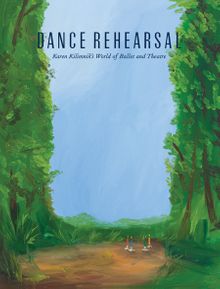 Dance Rehearsal: Karen Kilimnik's World of Ballet and Theatre
Dance Rehearsal: Karen Kilimnik's World of Ballet and Theatre
Published by Mills College Art Museum.
Edited by Melissa E. Feldman. Text by Melissa E. Feldman, Jörg Heiser, Apollinaire Scherr.
PUBLISHER
Mills College Art Museum
BOOK FORMAT
Hardcover, 8.75 x 11.5 in. / 96 pgs / 68 color.
PUBLISHING STATUS
Pub Date 2/28/2013
Active
DISTRIBUTION
D.A.P. Exclusive
Catalog: SPRING 2013 p. 127
PRODUCT DETAILS
ISBN 9780985460006 FLAT40
List Price: $35.00 CAD $47.50 GBP £30.00
AVAILABILITY
Out of stock
STATUS: Out of stock Temporarily out of stock pending additional inventory. |
 Karen Kilimnik
Karen Kilimnik
Published by Institute of Contemporary Art, University of Pennsylvania.
Introduction by Claudia Gould. Text by Ingrid Schaffner, Scott Rothkopf, Joel Lobenthal, Dominic Molon, Wayne Koestenbaum.
Called "sharp and witty" and "long overdue" for major recognition by The New York Times' Holland Cotter, Kilimnik is an important international artist with an extensive publication and exhibition history. Born in Philadelphia in 1955, she studied architecture at Temple University and continues to live in the region. Since 1991, her work has been represented by 303 Gallery in New York. She has had recent solo exhibitions at the Museum of Modern Art, Ireland, and White Cube, London. In 1992, ICA Philadelphia presented Kilimnik's first museum show as part of its "Investigations" series.
PUBLISHER
Institute of Contemporary Art, University of Pennsylvania
BOOK FORMAT
Clothbound, 6.75 x 9.25 in. / 207 pgs / 100 color.
PUBLISHING STATUS
Pub Date 6/1/2007
Out of print
DISTRIBUTION
D.A.P. Exclusive
Catalog: FALL 2007 p. 76
PRODUCT DETAILS
ISBN 9780884541103 TRADE
List Price: $45.00 CAD $55.00
AVAILABILITY
Not available
STATUS: Out of print | 00/00/00 For assistance locating a copy, please see our list of recommended out of print specialists |
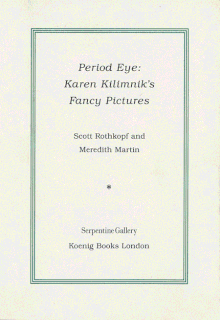 Karen Kilimnik's Fancy Pictures:
Karen Kilimnik's Fancy Pictures:
Period Eye
Published by Walther König, Köln.
Edited by Scott Rothkopf, Meredith Martin.
PUBLISHER
Walther König, Köln
BOOK FORMAT
Paperback, 4.25 x 6 in. / 64 pgs / 11 color.
PUBLISHING STATUS
Pub Date 7/1/2007
Out of print
DISTRIBUTION
D.A.P. Exclusive
Catalog: FALL 2007 p. 130
PRODUCT DETAILS
ISBN 9783865602237 TRADE
List Price: $15.00 CAD $17.50
AVAILABILITY
Not available
STATUS: Out of print | 4/1/2008 For assistance locating a copy, please see our list of recommended out of print specialists |
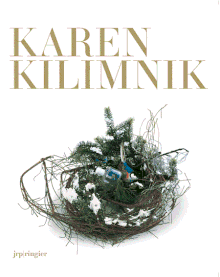 Karen Kilimnik
Karen Kilimnik
Published by JRP|Ringier.
Essays by Dominic Molon and Caoimhin Mac Giolla Leith.
PUBLISHER
JRP|Ringier
BOOK FORMAT
Paperback, 9.5 x 11.25 in. / 160 pgs / 120 color.
PUBLISHING STATUS
Pub Date 9/15/2006
Out of print
DISTRIBUTION
D.A.P. Exclusive
Catalog: FALL 2006 p. 122
PRODUCT DETAILS
ISBN 9783905701234 TRADE
List Price: $45.00 CAD $55.00
AVAILABILITY
Not available
STATUS: Out of print | 11/25/2008 For assistance locating a copy, please see our list of recommended out of print specialists |

